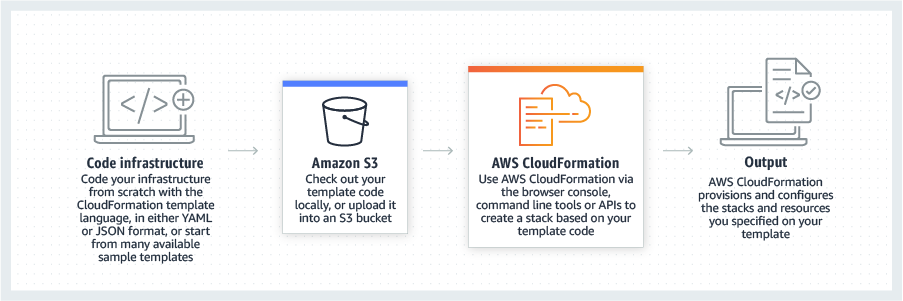AWS CloudFormation
Speed up cloud provisioning with infrastructure as code
1,000 handler operations
per month per account with the AWS Free Tier
Scale your infrastructure worldwide and manage resources across all AWS accounts and regions through a single operation.
Extend and manage your infrastructure to include cloud resources published in the CloudFormation Registry, the developer community, and your library.
Automate resource management across your organization with AWS service integrations offering turnkey application distribution and governance controls.
How it works

Use cases
Manage infrastructure with DevOps
Automate, test, and deploy infrastructure templates with continuous integration and delivery (CI/CD) automations.
Scale production stacks
Run anything from a single Amazon Elastic Compute Cloud (EC2) instance to a complex multi-region application.
Share best practices
Define an Amazon Virtual Private Cloud (VPC) subnet or provisioning services like AWS OpsWorks or Amazon Elastic Container Service (ECS) with ease.
How to get started
Try the AWS Free Tier
Pay nothing while you learn the basics of AWS CloudFormation.
Connect with an expert
Get the right support for using AWS CloudFormation.
Find out how CloudFormation works
Learn how to treat infrastructure as code.


